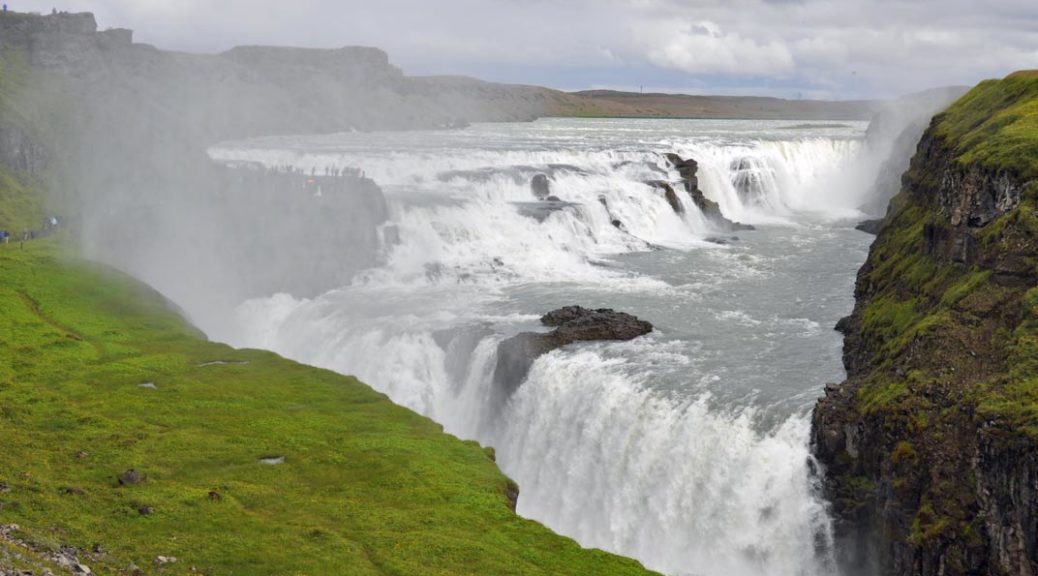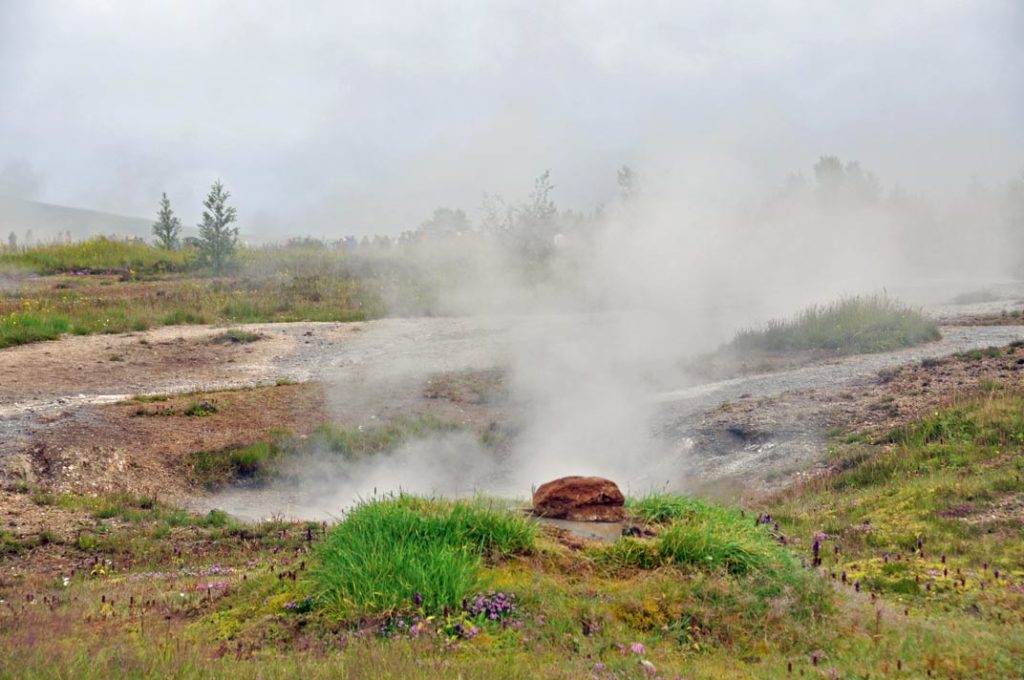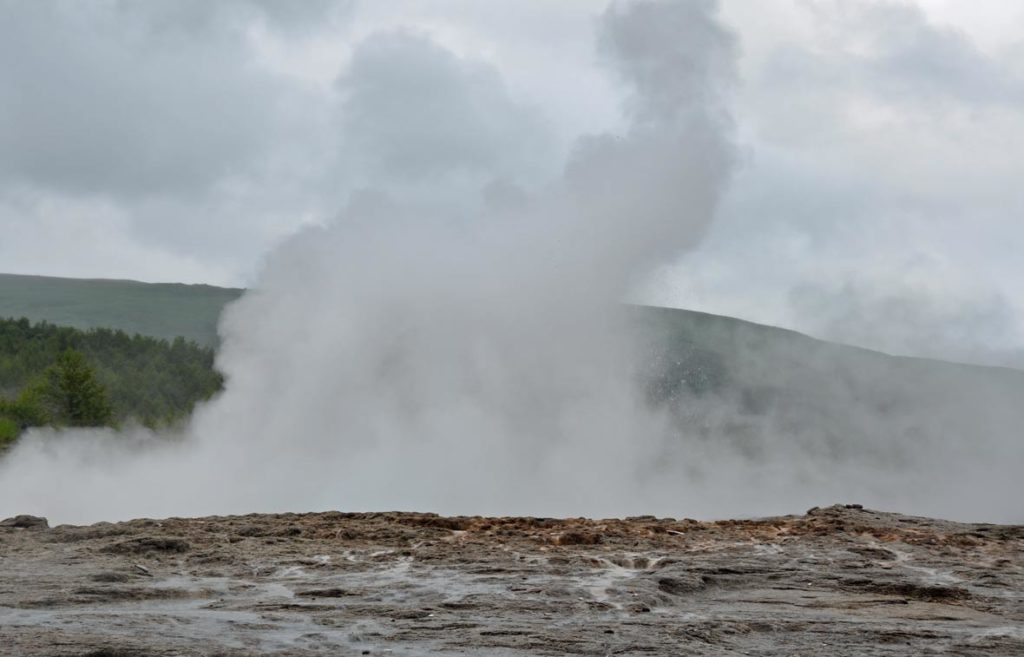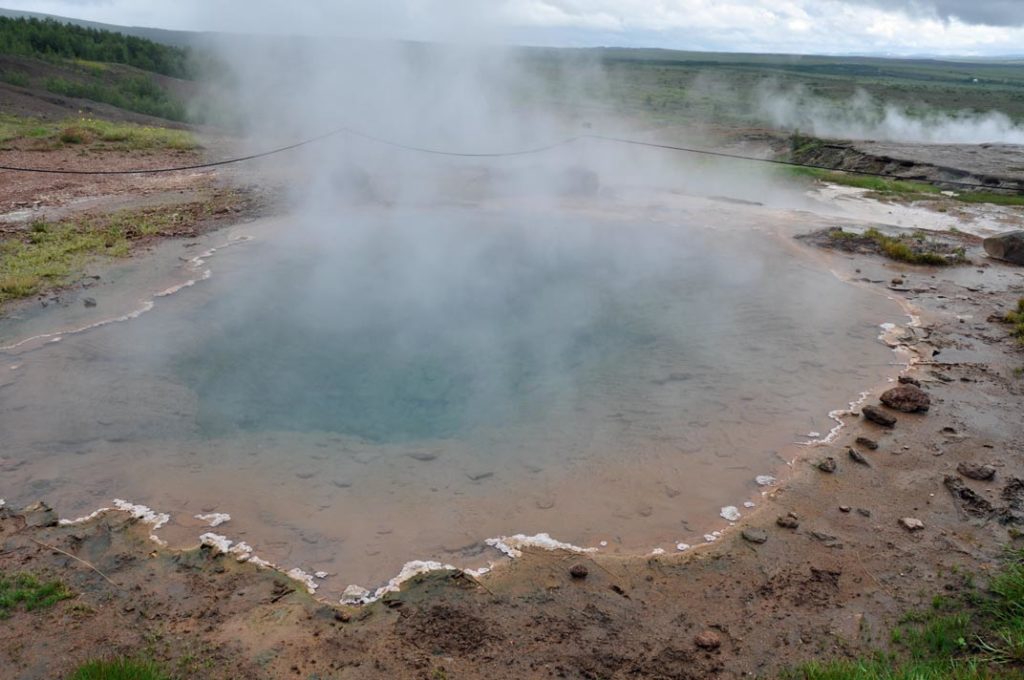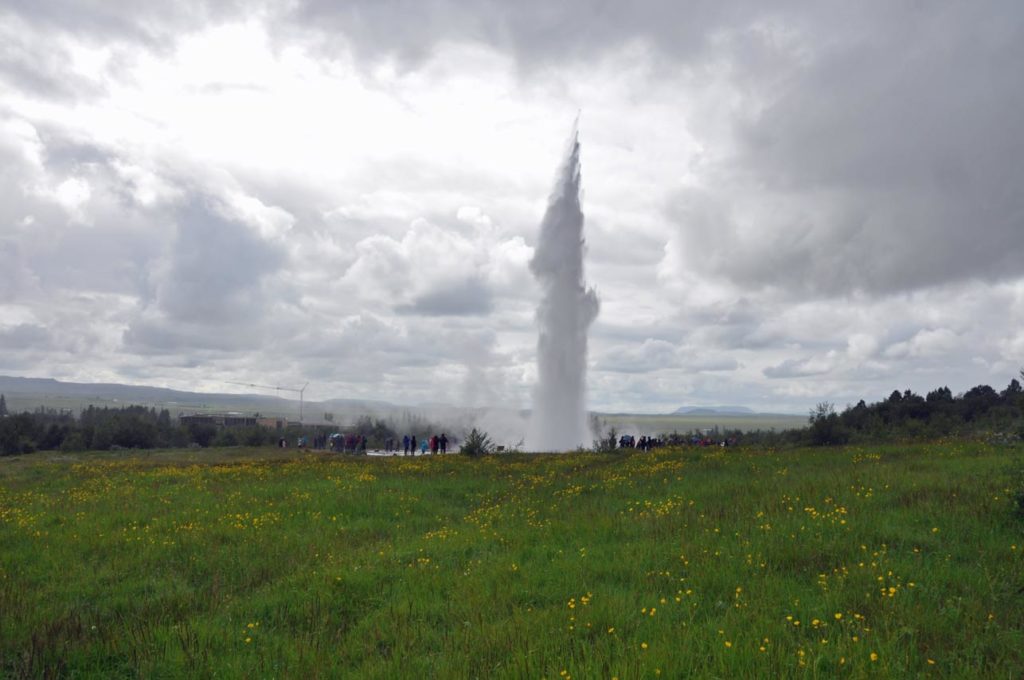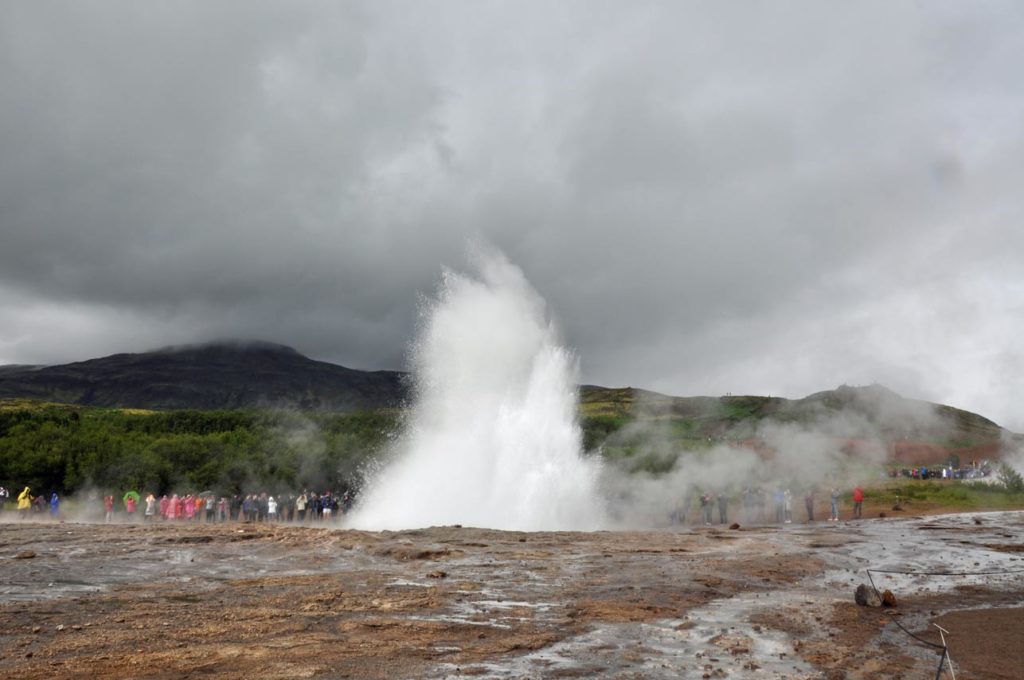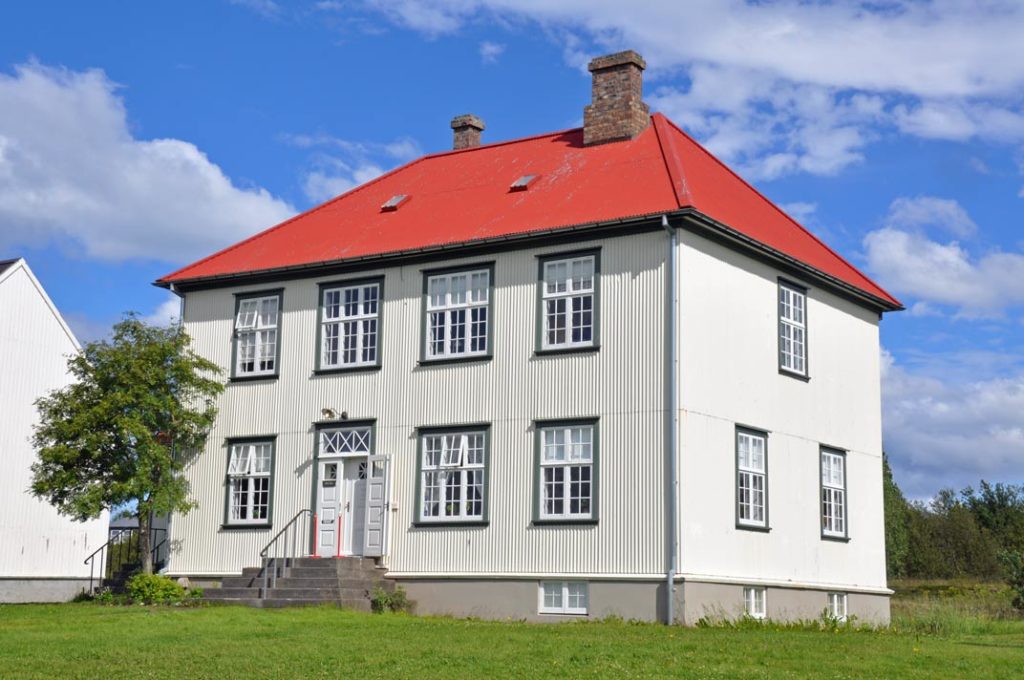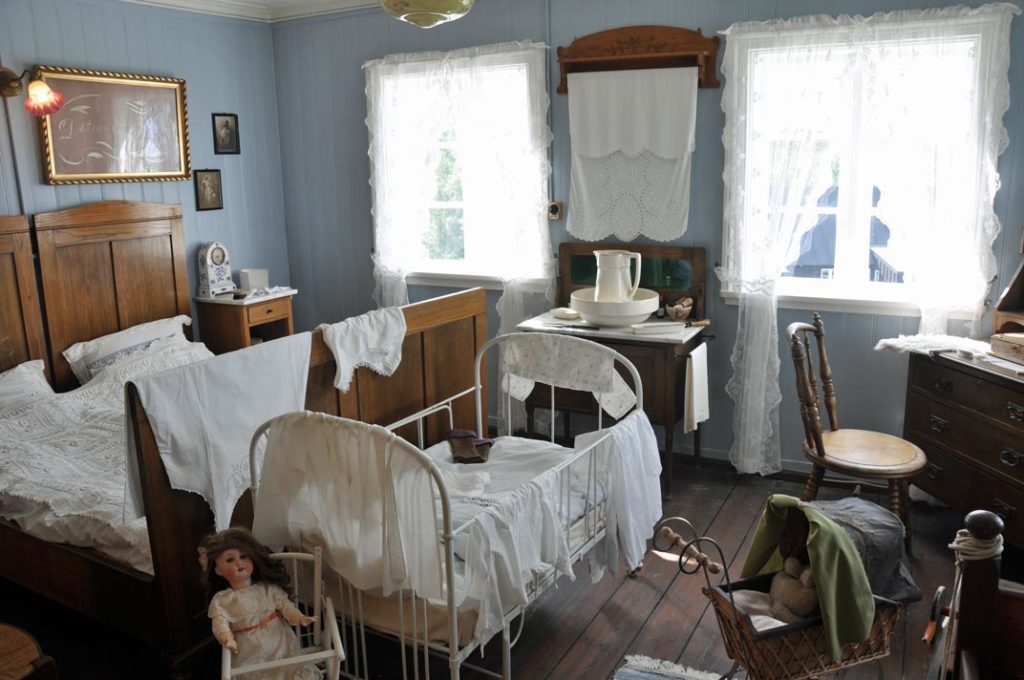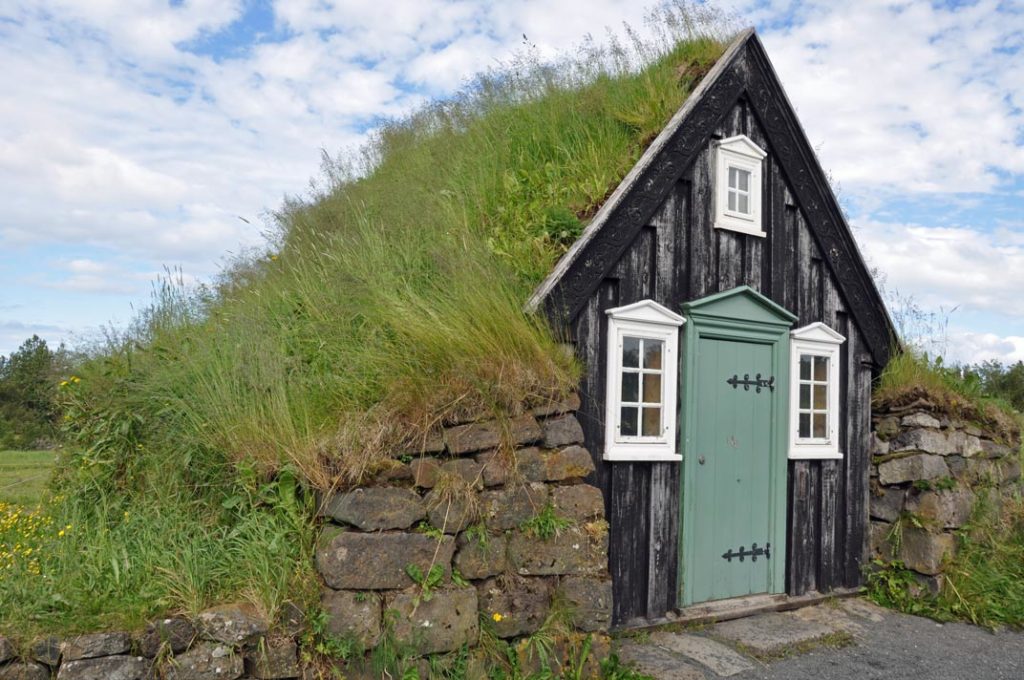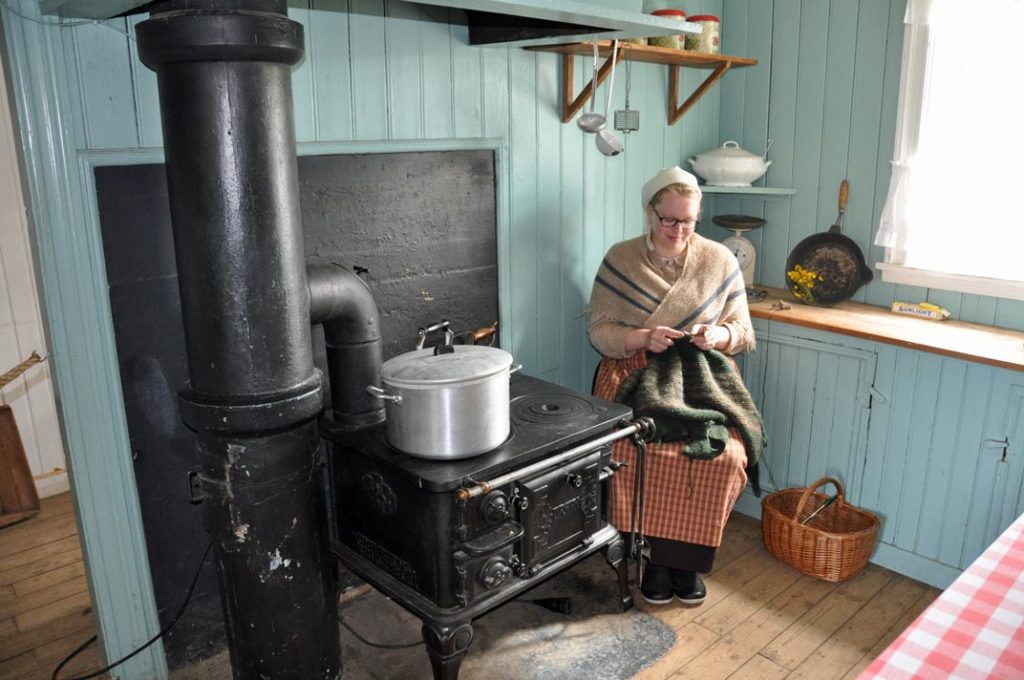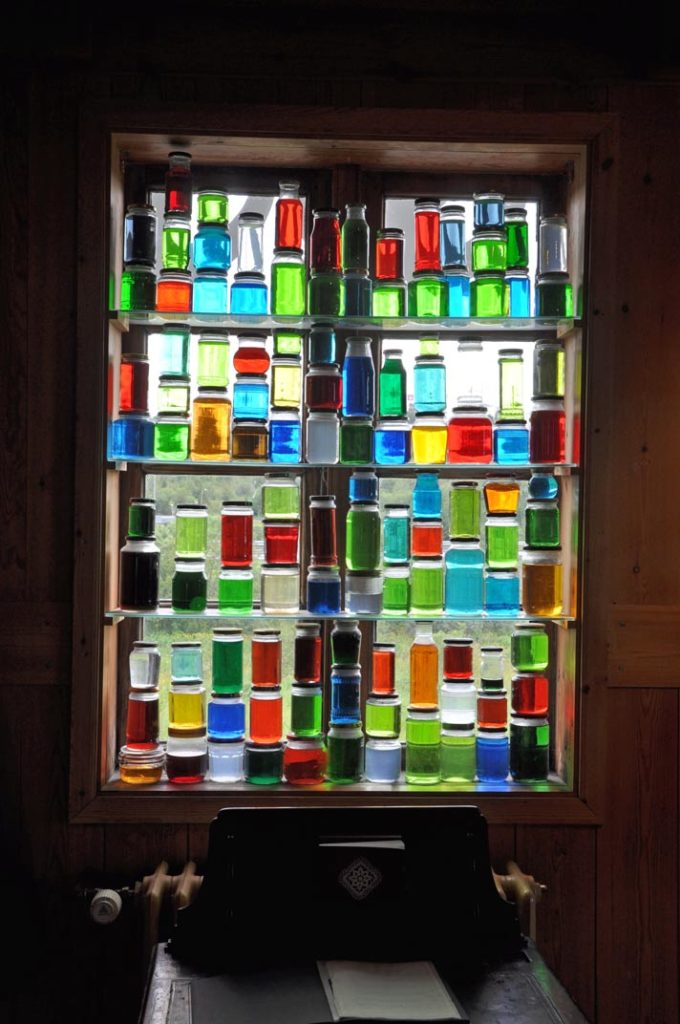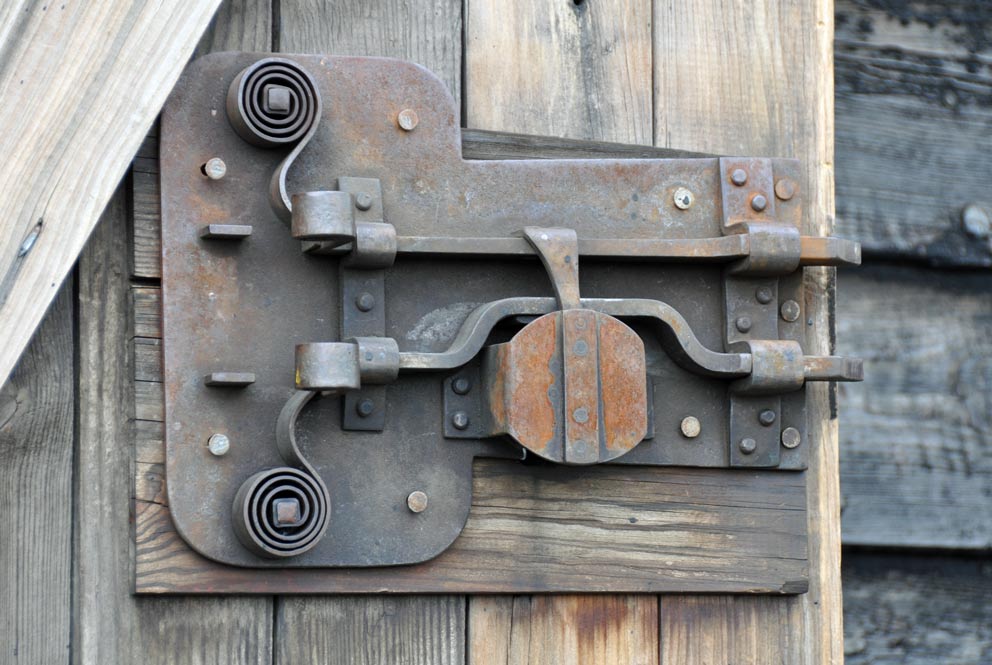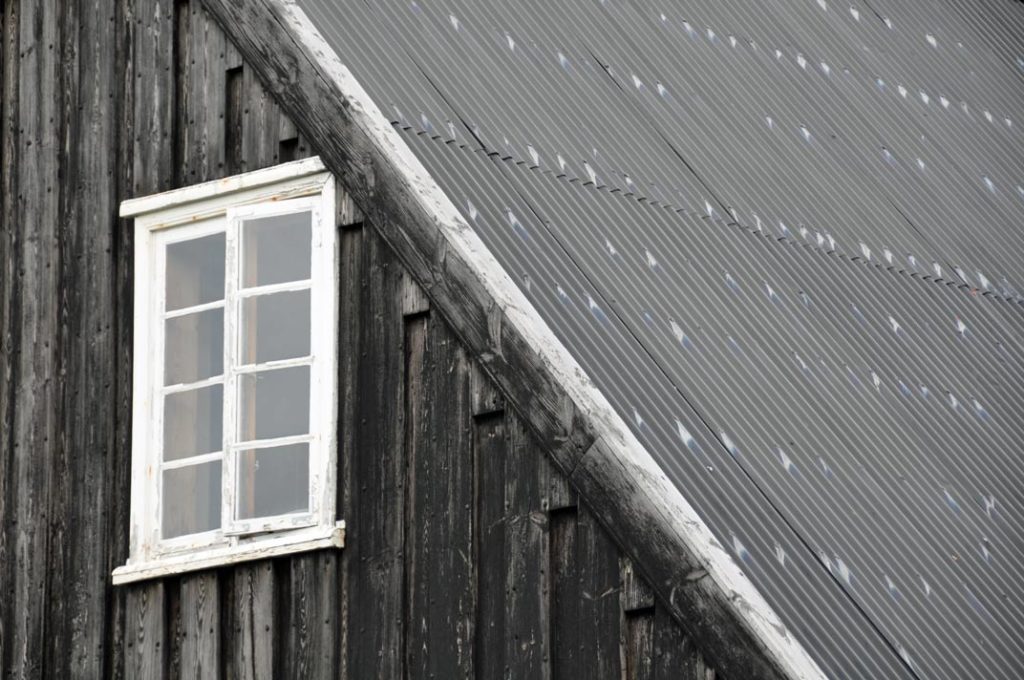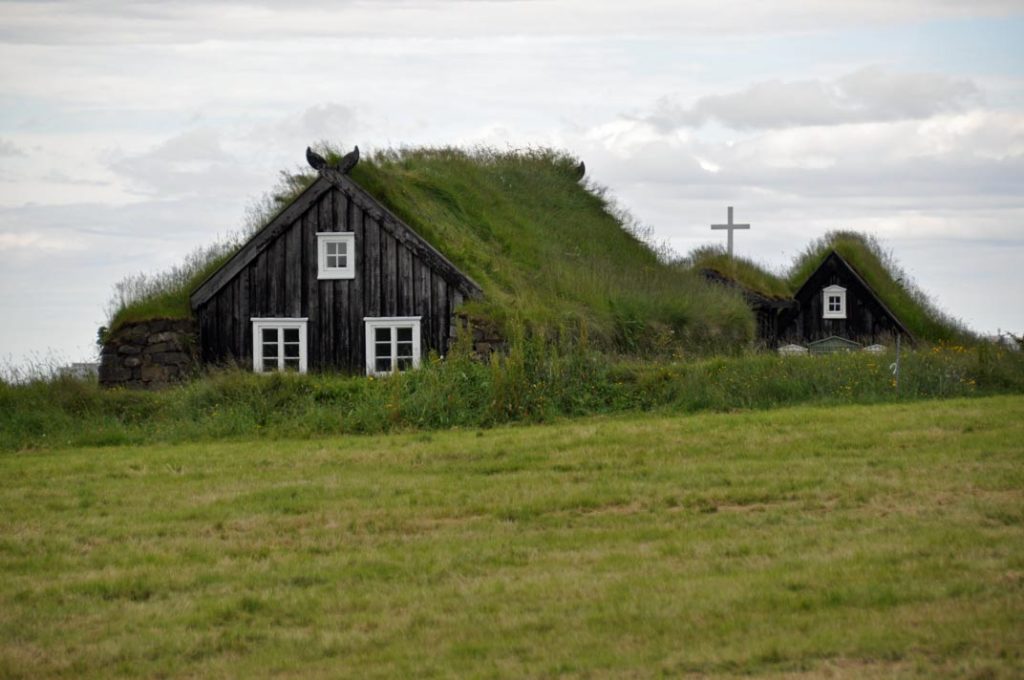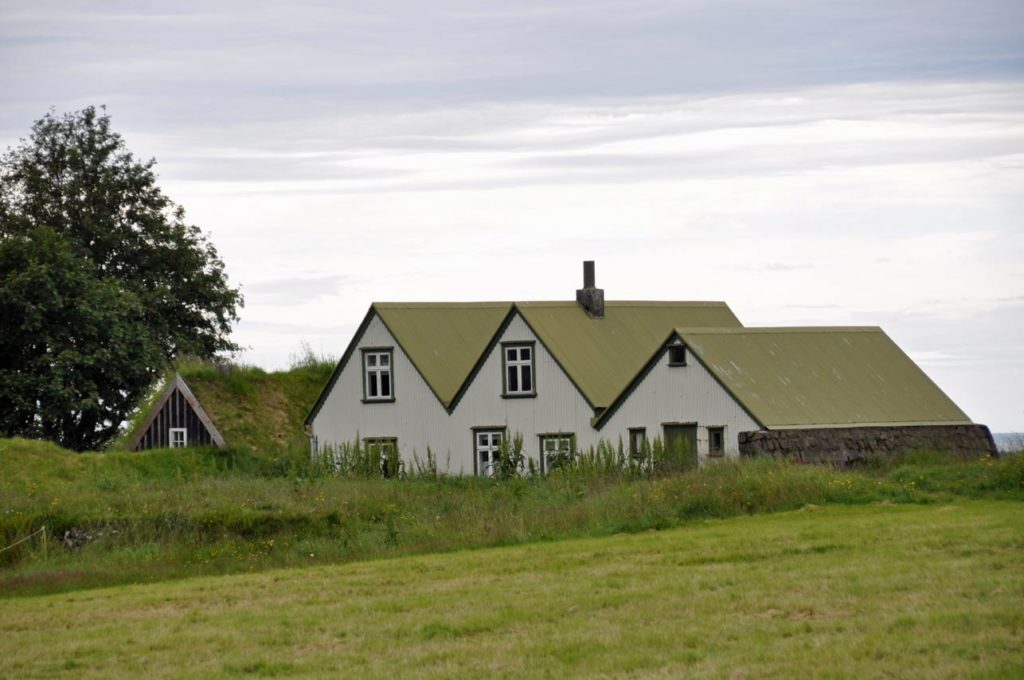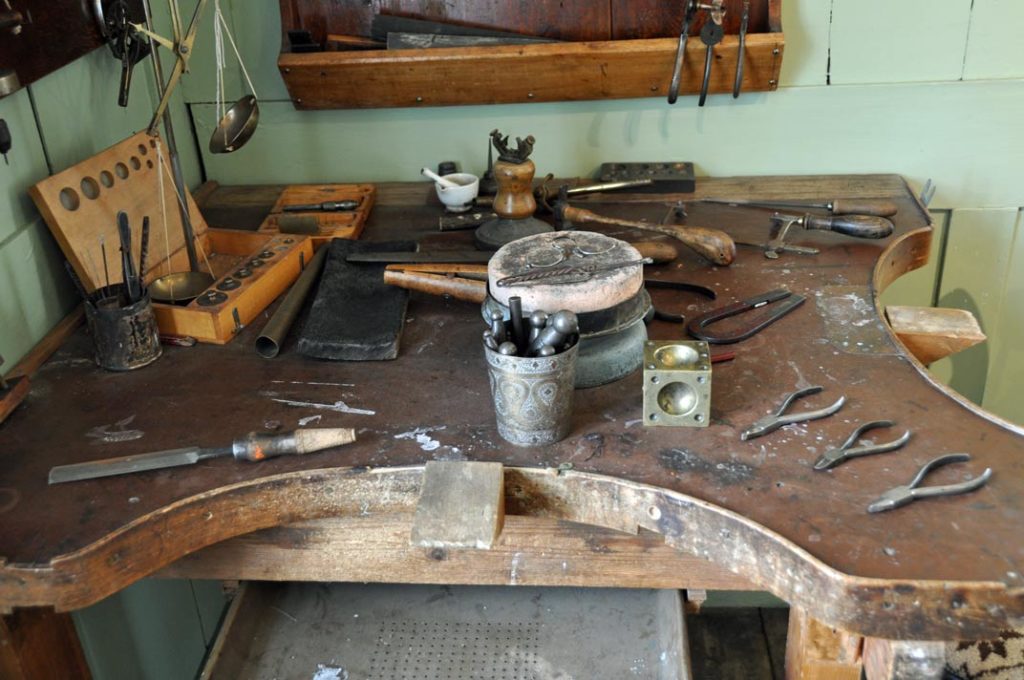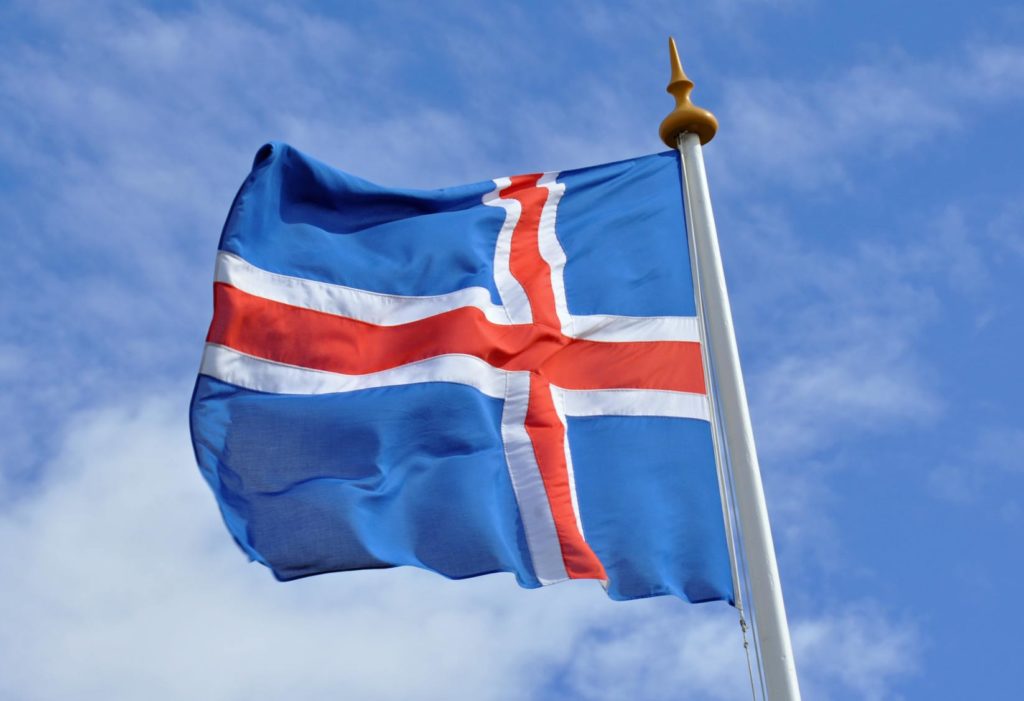At the end of our trip we circled back towards Reykavik and found ourselves with some time to cover the more standard day trip tours from the city.
This included a trip to visiting the original geyser, which unsurprisingly stinks to high heaven of sulphur (rotton eggs)
There were plenty of witches cauldron pools on view plus some spectacular high eruptions to be viewed. Just be sure to stand up-wind unless you want to get very wet indeed.
Then of course there is the amazing Godafoss waterfall, with it’s crevasse plunging at right angles.
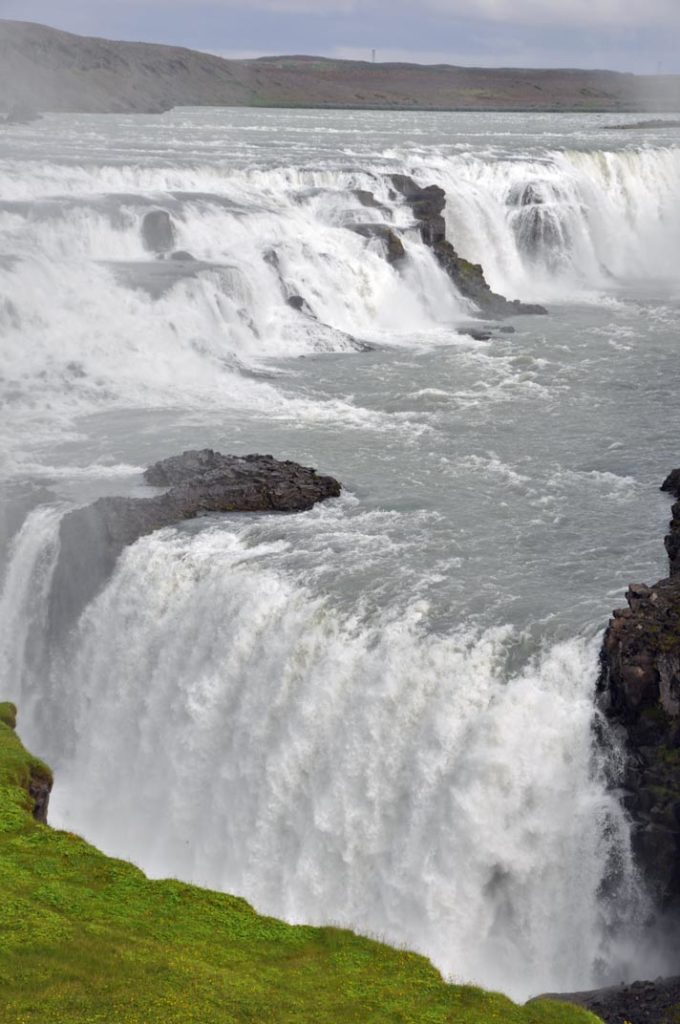 And last but not least, a trip to the wonderful folk museum to add a bit of context that might have been better understood at the beginning rather than the end of the trip.
And last but not least, a trip to the wonderful folk museum to add a bit of context that might have been better understood at the beginning rather than the end of the trip.
It is surprising how very poor Iceland was up to relatively recently with famine an ever-present danger. Even now, the country is rich is terms of hydrothermal-energy and in the education of its people, but poor in terms of land resources. It is still very economically vulnerable to global shocks with it’s main sources of income tourism and fishing still.
For a country dependent on tourism there was very little to see by way of quality service.
Similarly there was very little to be found in terms of excellent food. It is a country that focuses on selling it’s natural features with very little adornment, very little added value exhibit or tourism attractions.
So far, that’s been enough. But the friction that inevitably results from dealing with so many visitors in such a short space of time, to such an empty country are bubbling up. Its history plays out in a very stoic, pragmatic attitude towards life within the people we met but they can see the damage that tourism can cause. How they manage to mitigate that damage will determine whether the tourism industry continues to thrive.
It was an amazing trip to a beautiful unique country, surprisingly different to expectations but well worth visiting.

